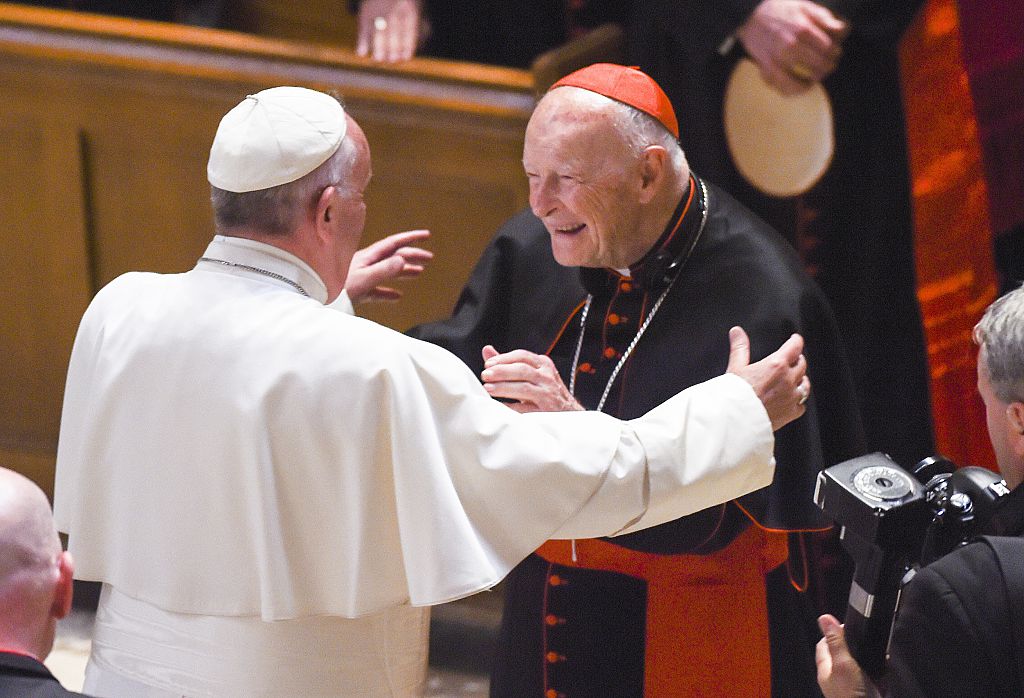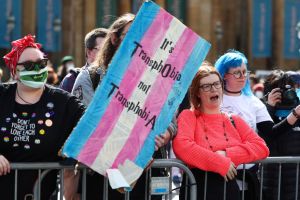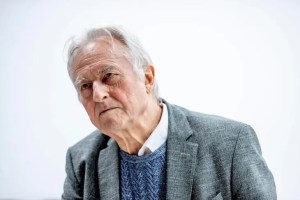On Tuesday the Vatican published its long-delayed report on the subject of ex-cardinal Theodore McCarrick, the insatiable sexual predator who served as archbishop of Washington from 2001 to 2006 but continued to wield huge influence in the Catholic Church until 2018, when he was finally exposed by the media and forced to resign as a cardinal.
Less than a week later, it’s becoming clear that the document is a laborious but clumsy whitewash. Let me explain why.
The ostensible purpose of the 500-page report was to explain how McCarrick rose to high episcopal office despite the fact that his beach-house assaults on seminarians were common knowledge among US bishops and Vatican officials for decades. And this it succeeded in doing, more or less.
Throughout the report, the finger of blame keeps swiveling back to St John Paul II, who was explicitly warned that ‘Uncle Ted’ McCarrick couldn’t keep his eyes or his hands off cute young men. (One one of his innumerable international plane flights, he was so taken with an airline steward that tried to persuade him to become a seminarian.)
John Paul chose to disbelieve the accusations and accepted McCarrick’s oily assurance that he’d never committed a sexual misdemeanor in his life. It was an outrageous lie, but it worked. JPII arrogantly believed that he could tell a guilty cleric from an innocent one — and that his old friend McCarrick fell into the latter category. Certainly some American bishops hid evidence from the Polish pope, but what John Paul did hear should have been enough to rule out any question of McCarrick being given Washington.
The McCarrick report produced headlines that, on the face of it, were a disaster for the Church. For years it had used the heroic legacy of John Paul II, canonized to huge acclaim in 2014, to distract attention from sexual scandals.‘Vatican Report Places Blame for McCarrick’s Ascent on John Paul II’, said the New York Times. And the Washington Post: ‘Still saintly? Vatican’s new report on McCarrick may complicate the legacy of Pope John Paul II’.
But those, believe it or not, were the headlines the Vatican wanted, and that the report was intended to generate. They’re not unfair. But they are not the whole story, either. The mainstream media were distracted by other this things week. Confronted by a fat document offering a neat storyline — a legendary pope’s reputation battered by shock revelations — they went for the obvious angle.
In the process, they missed several other storylines — none of them neat, but all of them pointing to a deep-seated culture of corruption in today’s Vatican. And hiding that corruption was the real purpose of the McCarrick report.
The most sensational parts of the document describe McCarrick’s rise to episcopal power from auxiliary bishop in New York to cardinal archbishop of the nation’s capital, via spells as bishop of Metuchen, New Jersey, and archbishop of Newark.
This rise was made possible by many factors, of which John Paul’s gullibility was only one. The future Uncle Ted was a favored nephew, so to speak, of the grandly influential Cardinal Francis Spellman, archbishop of New York from 1938 until 1967. Spellman has himself been accused of sexual misconduct — though we really do need to treat these posthumous claims with caution.
But it seems that McCarrick was earmarked for promotion as early as his teenage years, and as he rose up the hierarchy he was assisted by — and helped construct — a network of senior homosexual clergy who covered up for each other, and authorized massive secret payouts to McCarrick’s victims.
Whether that network still exists is a subject that the McCarrick report seems determined to avoid. It tries to draw a line between the bad old days, lasting into the reign of Benedict XVI, and the transparency of Francis’s pontificate. But, in the process, it tells us that today’s Vatican is anything but transparent.
The later part of the report has to explain why Cardinal McCarrick was so frantically busy on the international stage from the beginning of Francis pontificate until 2018, when the New York Times revealed that he was accused of assaulting a minor. It tells us: ‘Believing that the allegations had already been reviewed and rejected by Pope John Paul II, and well aware that McCarrick was active during the papacy of Benedict XVI, Pope Francis did not see the need to alter the approach that had been adopted in prior years.’
This is a breathtakingly misleading statement. What was the approach of Benedict XVI to McCarrick? As the report admits, when Benedict finally decided that the McCarrick rumors were credible he removed him from Washington and ordered him to keep a low profile in retirement. McCarrick ignored most of the restrictions placed on him, and Benedict should be criticized for allowing that to happen. But the former archbishop of Washington’s days as a papal confidant and international emissary were over.
Until, that is, Francis took office. The new pope immediately did precisely what the report says he didn’t do. He altered the approach that had been adopted by Benedict. He rehabilitated Theodore McCarrick — not surreptitiously but spectacularly.
What did the new pope know? The answer seems to be: quite a lot. Within weeks of taking office, he was almost certainly told about McCarrick’s squalid behavior by Archbishop Viganò, nuncio to the United States, who was obsessed with the cardinal’s wrongdoing. Francis, interviewed by the authors of the report, ‘did not recollect what Viganò said about McCarrick’ during two meetings, in June and October 2013. The report also says that before 2017, ‘the Pope was never informed by anyone that McCarrick had sexually abused or assaulted any person, irrespective of age’.
On Thursday night, Archbishop Viganò gave an interview to EWTN’s Raymond Arroyo in which he described this as ‘an absolutely false statement’. And you don’t have to be a fan of Viganò — who has recently taken to dabbling in right-wing conspiracy theories — to wonder how the Pope’s claim can possibly be true.
Why did Francis think his predecessor had disciplined McCarrick? Did he not know? Of course he did. One thing Jorge Bergoglio has never been accused of is naivety. On the contrary, his enemies back in Argentina — of whom there are so many that Francis has never set foot there since becoming pope — portray him as a Machiavellian collector of gossip about his fellow clergy.
He also has a scandalously long record of defending clerical allies whom he knows have been accused of committing or covering up sex abuse. The child abusers Fr Julio Grassi and Mgr Mauro Inzoli; the sinister Bishop Juan Barros of Chile, in league with a pedophile priest; the late Cardinal Godfried Danneels of Belgium, whom Francis invited to a synod on the family after Danneels had covered up incestuous abuse of a minor; the Pope’s close friend Bishop Gustavo Zanchetta, currently standing trial in Argentina for abusing seminarians and stealing money — all of these have been defended, rehabilitated or promoted by Francis. In every case, he knew what they had done or were credibly accused of doing.
Should we be surprised, therefore, that Francis welcomed back the arch-sycophant Cardinal McCarrick, with whose left-wing views he was in sympathy and who, more importantly, could mysteriously conjure up millions of dollars to settle the Church’s bills?
The McCarrick report’s account of McCarrick’s activities after 2013 looks thorough but, on closer inspection, is disgracefully sketchy and disingenuous.
The authors are forced to acknowledge that ‘Uncle Ted’ was frantically busy from 2013 until 2017. In 2014 he met President Obama to discuss US and Catholic relations with Cuba. He resumed his trips to China in an attempt to ‘improve relations between the Catholic Church and China’, reporting back to the Pope. He wrote 17 ‘known letters’ to Francis, discussing his visits to Turkmenistan, Kyrgyzstan, China, Bosnia, Cyprus, Egypt, the Philippines, Germany, Costa Rica, Gabon, the Central African Republic, Israel, Jordan, Iran, Argentina, Cuba, Japan, Morocco, Turkey, Kurdistan, Iraq, the UAE, Taiwan and Spain. An infuriated Viganò wrote to Cardinal Parolin, the secretary of state, asking why a disgraced prelate was globetrotting like this.
The report wants us to believe that none of McCarrick’s activity shaped Vatican foreign policy. But then it also wants us to believe that his letters to Pope Francis ‘with suggestions regarding episcopal appointments in the United States and elsewhere’ had no effect. It’s curious, then, that no fewer than three former allies of McCarrick have been made cardinals by Francis: Kevin Farrell, prefect of the Dicastery for Laity, the Family and Life; Joseph Tobin, archbishop of Newark; and Wilton Gregory, archbishop of Washington.
The idea that none of these long-term friends of Uncle Ted had heard colorful reports of his activities is preposterous — especially so in the case of Cardinal Farrell, who when he was an auxiliary bishop in Washington, shared an apartment with McCarrick. ‘I was shocked, overwhelmed; I never heard any of this before in the six years I was there with him,’ he said when the scandal broke in 2018.
This surprising statement has hugely damaged Farrell’s reputation in the United States, where he was previously Bishop of Dallas. But it has done him no harm with Pope Francis, who has made Farrell camerlengo — leader of the College of Cardinals when a pope dies — and last month put him in charge of scrutinizing certain Vatican financial decisions.
Interestingly, Farrell has now changed his story about what he knew when he was in Washington. In the report, he says he heard ‘old rumors’ about his boss sharing a bed with seminarians in a beach house — but the rumors were ‘not about sexual activity’. More of a teenage girls’ sleepover, perhaps? The question of what Cardinal Farrell knew crops up repeatedly when the McCarrick case is discussed. In the report he contradicts what he said in 2018. No wonder the Vatican has relegated his slippery contribution to a footnote.
It would take hours to list the evasions, half-truths and omissions in the McCarrick report. Don’t worry: I’m not going to do that. But a few excellent specialist reporters, notably Ed Condon, Washington bureau chief of the Catholic News Agency, are right now busy filling in the huge gaps in the document, which the pro-Francis mainstream media either didn’t notice or chose to ignore.
On Wednesday, Dr Condon published a story with the headline: ‘Did McCarrick use charitable money to settle abuse claim?’ — a question that the report should have asked but carefully didn’t. He noted that while archbishop of Newark, McCarrick set up an Archbishop’s Fund that he took with him to Washington and for which he successfully solicited vast donations amounting over the years to millions of dollars.
[special_offer]
Sources have told the Catholic News Agency that ‘McCarrick had direct and unsupervised control of how funds were spent, even after his retirement’. Which raises the question: what was the source of the $10,000 that McCarrick sent to his former diocese of Metuchen in 2005 to settle an abuse claim?
The McCarrick report doesn’t tell us — but, straining our credulity for the umpteenth time, assures us that ‘the record appears to show that although McCarrick’s fundraising skills were weighed heavily, they were not determinative with respect to major decisions made relating to McCarrick, including his appointment to Washington in 2000. In addition, the examination did not reveal evidence that McCarrick’s customary gift-giving and donations impacted significant decisions made by the Holy See regarding McCarrick during any period.’
So, the rehabilitated McCarrick’s international meetings with world leaders including President Obama had no effect on Vatican foreign policy; his letters to the Pope about episcopal appointments carried no weight; and the money he showered on still active senior clergy and Catholic institutions did nothing to protect him from the consequences of his predatory abuse. This is the fantasy narrative constructed by the McCarrick report. Now let’s see what happens as it falls apart.


















